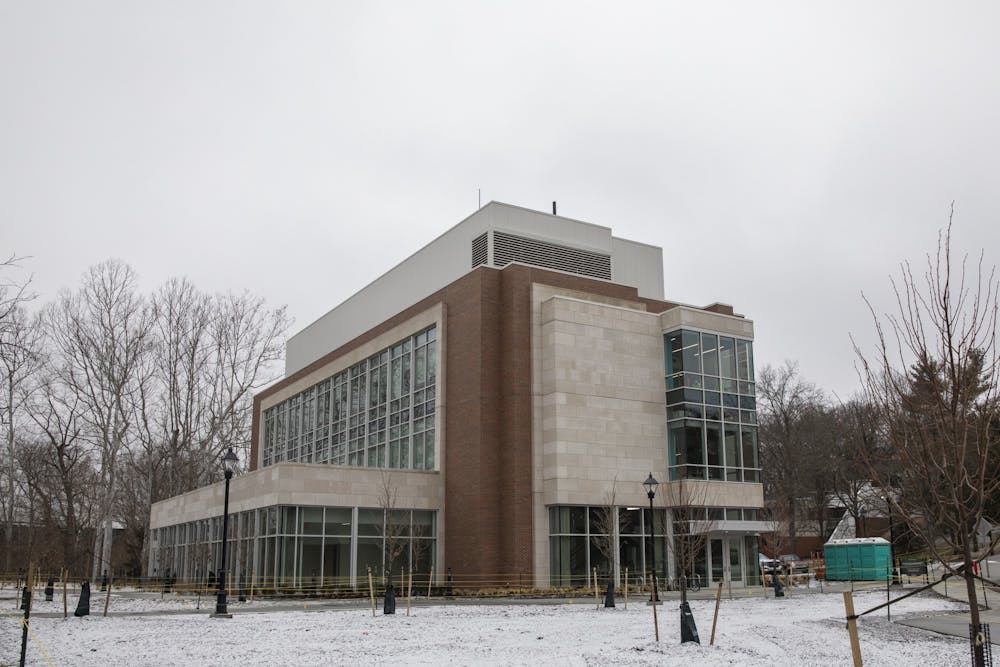Mark McMills, an Ohio University professor, wants students in his Introduction to Pharmacy class to come to one of two conclusions.
“I want a student to say, ‘Oh my God, I hate that stuff so much’ and that they don't want to do it,” McMills said. “Or, they go, ‘I love this so much I can't imagine doing anything else in my life.’”
McMills teaches this course alongside Sarah Adkins, a Doctor of Pharmacy who works with both Ohio State University’s College of Pharmacy and OU’s Heritage College of Osteopathic Medicine. Together, they are shaping the next generation of pharmacists.
OU’s pre-pharmacy program is housed within the College of Arts and Sciences. Students in the program must take chemistry, biology, math and physics classes. Earning the pre-pharmacy degree puts students on track to attend pharmacy school, eventually becoming a Doctor of Pharmacy.
In conjunction with OSU, OU pre-pharmacy students can be admitted to an early-assurance program. If OU students make it through OU’s four-year pre-pharmacy program, they are then automatically accepted into OSU’s Doctor of Pharmacy program.
Because of this, a large number of OU pre-pharmacy students continue their pharmacy education at OSU.
This inter-university collaboration was enabled by a grant as well as the work of OU professor Marty Tuck and OSU professor Ken Hale.
Over the years, the program has grown and adapted, undergoing structural and leadership changes. Most of the transitions have been smooth. McMills describes the process of Adkins undertaking Hale’s role co-teaching the Introduction to Pharmacy class as “seamless.”
However, COVID-19 has brought a new set of challenges to the pre-pharmacy program at OU. The professors found the transition to online instruction to be ineffective for their students.
The Introduction to Pharmacy course usually contains presentations from a number of speakers in various health fields, which allow students to understand the breadth of the field they will be entering into. Online, though, these presentations lost some of their significance. Staring at blank screens on his computer, McMills was left to wonder how much the students were actually gaining from the classes, which he felt to be “problematic.”
Therefore, due to the challenges associated with teaching the course virtually, as well as pandemic-related budget uncertainty, the decision was made not to offer OU’s Introduction to Pharmacy class this Spring Semester.
“We're going to wait and let it go a year before we offer it again,” McMills said.
Because the class is taken largely by freshmen and sophomores interested in the pre-pharmacy track, as of right now, graduating students will not be impacted by this change.
Despite these COVID-19-related teaching obstacles, both McMills and Adkins still find their profession to be rewarding and worthwhile.
For McMills, teaching pharmacy classes is more than a job.
“It's been an incredible way of helping students fulfill their destiny,” McMills said.
Similarly, Adkins enjoys watching her students progress through their education and enter into the field of pharmacy professionally.
“I've seen them graduate, I've seen them move on to practice and watched them change the field of pharmacy,” Adkins said. “It's actually very, very cool.”
Brianne Porter is one student who graduated from OU, continued on to study pharmacy at OSU, and then entered the field. Porter is now a pharmacist and faculty member at The Ohio State University College of Pharmacy.
A 2010 graduate of OU, Porter still values the information she learned while taking the Introduction to Pharmacy course.
“The most prominent memory I have was learning about all of the different settings that pharmacists could practice in,” Porter said in an email. “I had always envisioned a pharmacist to be someone working at CVS or Walgreens, but I remember learning about pharmacists working in nuclear medicine, pharmacists helping insurance companies determine the most effective medications to have on their formularies, pharmacists working with teams of physicians to determine the best courses of therapy for acutely ill patients in the hospital, and so on. It was very inspiring to know that it was a field that offered so many opportunities beyond what the lay person imagines a pharmacist to do.”






